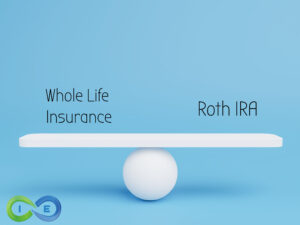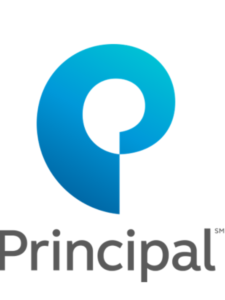Life insurance is so much more than just a policy—it’s a lifeline for millions, yet it’s shrouded in myths and missed opportunities. In 2024, U.S. life insurance premiums grew to $179.97 billion, yet a significant $25 trillion mortality protection gap looms over American families (LIMRA). From AI-driven underwriting to unclaimed billions, here’s a deep dive into the numbers shaping the industry, packed with surprising stats to inform consumers and professionals alike.
Table of Contents
- Market Size: A $4.8 Trillion Future
- Policy Types: Term vs. Permanent Showdown
- Premiums: Costs and Misconceptions
- Who Owns Life Insurance? Demographic Deep Dive
- Top Companies Ruling the Market
- Claims: Fast Payouts, Hidden Pitfalls
- Digital Revolution: AI and Online Buying
- Agents: The Human Touch in a Digital Age
- Policy Loans and Unclaimed Benefits
- Future Trends: Gig Workers and Annuities
- Frequently Asked Questions
Market Size: A $4.8 Trillion Future
The life insurance industry is huge, with U.S. direct written premiums hitting $1.2 trillion in 2023, up 4.4% year-over-year (NAIC). Globally, premiums are forecast to reach $4.8 trillion by 2035, fueled by a 3% annual growth rate through 2026 (Swiss Re). In 2023, 259.7 million policies were in force, covering 90 million families, yet total coverage stood at a massive $20.4 trillion (ACLI).
| Region | Annual Growth Rate |
|---|---|
| Emerging Asia | 7.5% |
| North America | 5.2% |
Policy Types: Term vs. Permanent Showdown
In the battle between term life vs whole life, we see term life rules coverage volume, making up 39.5% of new policies but 71.9% of face amounts ($373,941 average coverage). However, permanent policies (whole, universal, variable) dominate sales (60.5%) but average just $95,723 in coverage. Group life holds 45% of in-force coverage, totaling $8.1 trillion. Indexed universal life (IUL) saw 3–7% premium growth in 2024, while variable universal life (VUL) surged 12–16% due to strong equity markets (LIMRA).
Premiums: Costs and Misconceptions
Term premiums rose 4.8% from 2022 to 2023, reflecting post-COVID risk adjustments, but offer a 3:1 premium-to-benefit ratio over permanent policies. Despite affordability, 44% of Americans overestimate costs, with millennials guessing up to 6x the actual price. A $250,000 term policy averages $13.50/month for a healthy 40-year-old, but 50% of women cite cost as a barrier, with only 21% feeling knowledgeable (LIMRA).
Compare Term vs Whole Life Quotes
Who Owns Life Insurance? Demographic Deep Dive
Only 52% of Americans (90 million households) own life insurance, with stark demographic differences:
- Generations: Gen Z (36%), Millennials (50%), Gen X (55%), Boomers (57%).
- Gender Gap: Women lag men by 11 points (46% vs. 57%), the widest in 14 years.
- Ethnicity: Hispanic households (45%) trail Black and white (55%) by 10 points.
- Income: High earners (>$100,000) hold policies 3x larger than low earners (<$50,000).
- Geography: Utah leads ownership (62%), while New Mexico lags (41%) (Bankrate).
| Demographic | Ownership Rate |
|---|---|
| Gen Z | 36% |
| Women | 46% |
| Hispanic | 45% |
Top Companies Ruling the Market
The top 10 U.S. insurers control 47.2% of the market, with State Farm and Progressive leading growth. Globally, Allianz SE ($1.2 trillion in assets), China Life, and Nippon Life shine, all boasting AM Best A+ ratings (S&P Global).
Claims: Fast Payouts, Hidden Pitfalls
73% of claims are paid within 30 days, but 34.1% of resisted claims ($251.6 million) stem from contestability period denials due to misrepresentation. Disputes can stretch payouts to 60–90 days. Over $6 billion in benefits remain unclaimed, with the NAIC’s Policy Locator resolving 312,557 cases since 2016 (NAIC).
Digital Revolution: AI and Online Buying
The industry is sprinting into the digital age. 24% of policies were bought online in 2023, and AI-driven underwriting slashed approval times by 40%. No-exam policies, approved in 24–48 hours, now make up 35% of sales. Millennials lead the charge, with 48% using social media (YouTube, Instagram, TikTok) for insurance education, though 40% abandon complex digital forms (LIMRA).
Agents: The Human Touch in a Digital Age
The U.S. has 902,500 life insurance agents, 61% female, averaging 46 years old. Top term life agents working for large call centers (Select Quote, Policy Genius, Ethos) sell 50–60 policies monthly, earning up to $83,430 annually, while the industry average is $51,936. Yet, 95% of new agents quit within five years, burned out by commission-based pay and digital competition. Only 37% use CRM tools, lagging behind tech trends (Zippia).
Policy Loans and Unclaimed Benefits
25% of permanent policyholders tap policy loans, averaging $25,000–$50,000, with $138 billion outstanding in 2023. These loans cut death benefits and can slow cash value growth depending on the policy and design. Meanwhile, 70% of policies name multiple beneficiaries (spouses 58%, children 32%), but $6 billion in benefits go unclaimed due to outdated records (Investopedia).
Future Trends: Gig Workers and Annuities
Indexed annuities are set to grow 12% annually through 2026, driven by retirement demand. The gig economy faces a $50 billion coverage gap, a goldmine for insurers. Regulatory shifts, like NAIC’s 2024 transparency rules, push for fairer underwriting. Emerging products, like parametric insurance, could redefine risk coverage by 2030 (Swiss Re).
Frequently Asked Questions
How big is the life insurance market?
U.S. premiums hit $179.97 billion in 2024, with global premiums forecast to reach $4.8 trillion by 2035.
How fast are policies approved?
No-exam policies take 24–48 hours, while traditional underwriting averages 3–6 weeks, with medical exams lasting 20–30 minutes.
Why do claims get denied?
34.1% of resisted claims ($251.6 million) are due to misrepresentation during the contestability period.
What’s the gender gap in ownership?
Women (46%) are 11 points less likely to own life insurance than men (57%), a 14-year high.
How does digital tech help?
AI cuts approval times by 40%, and 24% of policies are bought online, especially by millennials.





